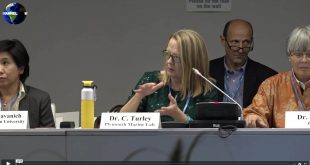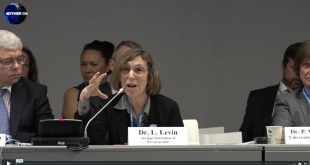Climate, Carbon and Cities: Assessing Risk, Transforming Sectors, Building the Future
This event, organized by ADB, TERI, and WBGU, explores recent studies on climate impacts in Asia-Pacific, on urban transformations, and on decarbonization in India. We offer insights on how to contribute to the transformation to a low-emissions, resilient and inclusive future.
Moderator:
Kira Vinke, PIK
Speakers:
Bambang Susantono, Vice-President, ADB: A Region at Risk: The Human Dimensions of Climate Change in Asia and the Pacific
Mr. A. K. Saxena, Senior Fellow & Director, TERI: Enabling Decarbonization of the Power Sector in India
Dirk Messner, Chair, WBGU and John Schellnhuber, WBGU and Director, PIK: Humanity on the Move: Unlocking the Transformative Power of Cities
A Region at Risk: The Human Dimensions of Climate Change in Asia and the Pacific
Recent regional climate change projections have consequences for human systems, particularly for developing countries in Asia and the Pacific.
Asia and the Pacific continues to be exposed to climate change impacts. Home to the majority of the world’s poor, the population of the region is particularly vulnerable to those impacts. Unabated warming could largely diminish previous achievements of economic development and improvements, putting the future of the region at risk.
The report discusses the most recent projections pertaining to climate change and climate change impacts in Asia and the Pacific, and the consequences of these changes to human systems, particularly for developing countries. It also highlights gaps in the existing knowledge and identifies avenues for continued research. Global flood losses are expected to increase to $52 billion per year by 2050 from $6 billion in 2005.Food shortages could increase the number of malnourished children in South Asia by 7 million by 2050.Asia needs strategies for ensuring prosperity and security under unavoidable climate change. Enabling Decarbonization of the Power Sector in India India has moved from having an energy deficit to an energy surplus. 23% of homes still need to be electrified. 100% of homes will be electrified by the end of 2017. This will increase the demand for electricity. The Energy Conservation Act was passed in 2001. The Indian government has plans to ensure only electric vehicles will be produced and sold in the country by 2030. The Government also has a target of deploying 175 GW of Renewable Energy by 2022.
Humanity on the Move: Unlocking the Transformative Power of Cities. The momentum of urbanization and its impacts are so massive that we must face up to this trend. In view of the existing cognitive, technical, economic and institutional path dependencies, a policy of business as usual – i.e. an unstructured, quasi-automatic urbanization – would lead to a non-sustainable ‘world cities society’. Only if cities and urban societies are sufficiently empowered can they make use of the opportunities for sustainability and successfully follow the urban transformation pathways. The success or failure of the Great Transformation will be decided in the cities.
 Mother Channel Environmental, climate change news and media.
Mother Channel Environmental, climate change news and media.



